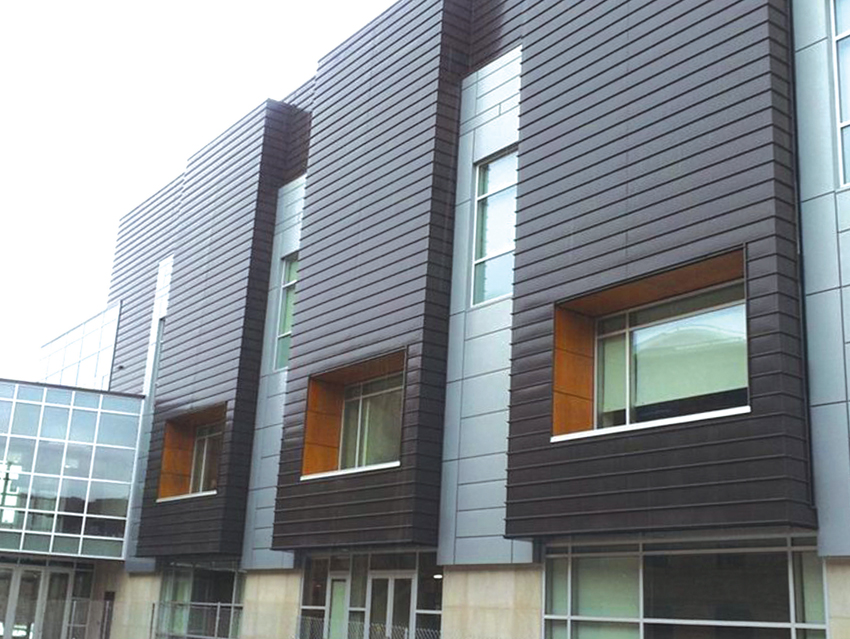The Role Of Civil Engineering In Developing Sustainable Energy-Efficient Building Envelopes

Buildings consume a significant amount of energy in the world, and their carbon footprint is increasing rapidly. There is a dire need for innovative technologies that can reduce energy consumption while improving indoor environmental quality. Sustainable building envelopes are one such solution that can help save energy and reduce greenhouse gas emissions.
In this article, we will discuss what sustainable building envelopes are and how they work. We will also answer some frequently asked questions about sustainable building envelopes. Let's dive in!
What are Sustainable Building Envelopes?
Sustainable building envelopes, also known as green building envelopes or high-performance building envelopes, are the exterior walls, roof, and foundation of a building. They provide a barrier between the interior and exterior environments and can impact the energy performance, durability, and comfort of a building.
The goal of a sustainable building envelope is to reduce the amount of energy required to maintain comfortable temperatures inside the building. It can comprise various components, including insulation, air barriers, vapor barriers, windows, doors, shading devices, and roofing materials.
How Do Sustainable Building Envelopes Work?
Sustainable building envelopes work by using various strategies to reduce energy consumption while ensuring that the building's occupants are comfortable and healthy. Some of these strategies include:
- Thermal insulation: Insulation reduces heat loss through the building envelope, reducing the need for heating in cold weather and cooling in warm weather.
- Air barriers: Air barriers prevent air leakage through the building envelope, reducing the energy required to maintain comfortable indoor temperatures.
- Vapor barriers: Vapor barriers prevent moisture from infiltrating the building envelope, reducing the risk of mold growth and moisture damage.
- Windows: Energy-efficient windows reduce heat loss in cold weather and heat gain in warm weather, reducing the energy required for heating and cooling.
- Shading devices: Shading devices, such as overhangs, can reduce solar heat gain in warm weather, reducing the energy required for cooling.
- Roofing materials: Energy-efficient roofing materials, such as cool roofs, can reflect sunlight and reduce cooling loads.
What are the Benefits of Sustainable Building Envelopes?
Sustainable building envelopes offer numerous benefits, including:
- Energy savings: Sustainable building envelopes can significantly reduce energy consumption and, consequently, reduce energy bills.
- Reduced greenhouse gas emissions: By reducing energy consumption, sustainable building envelopes can help reduce greenhouse gas emissions, combatting climate change.
- Improved indoor environmental quality: Sustainable building envelopes can improve indoor air quality by reducing air leakage and moisture infiltration and mitigating the risk of mold growth.
- Increased durability: Sustainable building envelopes are built to last and can withstand harsh weather conditions, reducing the need for repairs and maintenance.
- Increased occupant comfort: Sustainable building envelopes can provide a comfortable indoor environment by regulating temperature, humidity, and ventilation.
- Increase property value: Sustainable buildings and their green features are increasingly becoming more attractive to buyers and tenants, increasing their value.
What are the Challenges in Implementing Sustainable Building Envelopes?
Despite the numerous benefits of sustainable building envelopes, several challenges hinder their implementation. These challenges include:
- Higher upfront costs: Sustainable building envelopes often require a higher upfront investment than traditional building envelopes.
- Lack of awareness: Many building owners, architects, and contractors are not aware of the benefits of sustainable building envelopes and the technologies needed to implement them.
- Disparity in regulations: Building codes and regulations can vary widely between jurisdictions, making it challenging to implement sustainable building envelopes consistently.
- Technical expertise: Implementing sustainable building envelopes requires specialized technical knowledge and training, which can be challenging to find.
Conclusion
Sustainable building envelopes offer a promising solution to reducing energy consumption and combating climate change. They provide numerous benefits, including energy savings, improved indoor environmental quality, and increased property value. However, several challenges hinder their implementation, and building owners, architects, and contractors should work together to overcome these challenges and implement sustainable building envelopes.
We hope that this article has provided you with a better understanding of sustainable building envelopes and their potential impact on the built environment. If you have any further questions or would like to learn more about sustainable building envelopes, feel free to reach out to us.
FAQ
What is a sustainable building envelope?
A sustainable building envelope is the exterior walls, roof, and foundation of a building designed to reduce energy consumption and enhance indoor environmental quality.
What are the components of a sustainable building envelope?
The components of a sustainable building envelope can include insulation, air barriers, vapor barriers, windows, doors, shading devices, and roofing materials.
What are the benefits of sustainable building envelopes?
The benefits of sustainable building envelopes include energy savings, reduced greenhouse gas emissions, improved indoor environmental quality, increased durability, increased occupant comfort, and increased property value.
What are the challenges in implementing sustainable building envelopes?
The challenges in implementing sustainable building envelopes include higher upfront costs, lack of awareness, disparity in regulations, and technical expertise.
What can I do to implement sustainable building envelopes?
If you are interested in implementing sustainable building envelopes, you can start by researching the technologies and benefits of sustainable building envelopes, consulting with a qualified professional, and considering the long-term benefits of sustainable building envelopes.
How can I learn more about sustainable building envelopes?
If you would like to learn more about sustainable building envelopes, you can reach out to professionals in the industry, attend conferences and workshops, and read publications about sustainable building envelopes.
![[PDF] Indoor Air Quality in Sustainable, Energy Efficient Buildings](https://www.researchgate.net/profile/Steven-Emmerich/publication/241728450/figure/tbl3/AS:655091149312008@1533197309690/Comparison-of-Selected-IAQ-Factors-Among-Some-Sustainable-Building-Programs_Q320.jpg)

Post a Comment for "The Role Of Civil Engineering In Developing Sustainable Energy-Efficient Building Envelopes"